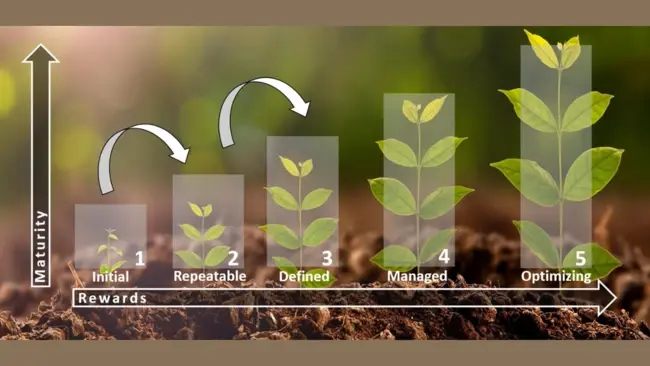Embarking on the journey to improve your organization’s data governance is akin to embarking on a quest for continuous improvement. Here’s how you can navigate this journey using the Data Governance Maturity Model:

1. Select the Right Data Governance Model (Choosing Your Path)
Before you begin, you must choose the path that aligns best with your organization’s culture, industry, and specific needs. Consider factors such as:
- Compatibility: Does the model align with your organizational goals and industry standards?
- Complexity: Is the model appropriately complex for your organization’s size and maturity?
- Resources: Do you have the necessary resources (time, personnel, budget) to implement this model or to build it from scratch if you don’t choose an off-tlf one.
2. Assess Your Current State (Understanding Your Starting Point)
Assessment is like taking a snapshot of your current data governance practices. There are different ways to conduct this assessment and it really depends on the data governance maturity model used. Some come with their own survey-type assessments. Regardless, an assessment may involve any or all of the following:
- Stakeholder Interviews: Engage with key personnel to understand their perspective on data governance and the quality of data governance capabilities.
- Document Review: Examine existing data policies, standards, and procedures.
- Surveys: Answer specific questions to assess the existence and maturity level of specific data governance capabilities.
- Current State Mapping: Identify which level of the maturity model your data governance program currently resides in.
3. Analyze the Assessment (Deciphering the Map)
Once you’ve assessed your current state, it’s time to analyze the findings. This step involves:
- Gap Analysis: Identify the gaps between your current state and the next level of maturity. Be mindful that you can’t skip a level.
- Prioritization: Determine which gaps to address first based on their impact and feasibility.
- Resource Allocation: Decide what resources are needed to bridge these gaps.

4. Improve (Embarking on the Journey)
With a clear understanding of where you stand and where you need to go, begin the improvement process:
- Action Planning: Develop a detailed plan with specific actions, responsible parties, and timelines.
- Implementation: Execute the plan, monitor progress, and adjust as necessary.
- Change Management: Ensure that the organization is ready for change. Communicate the benefits and involve stakeholders in the process.
5. Re-assess (Checking the Compass)
Improvement is a continuous process. Regular reassessment ensures that you are on the right track and allows for course corrections:
- Monitor and Measure: Continuously track the progress against the plan and measure the impact of changes.
- Feedback Loop: Encourage feedback from stakeholders to understand the effectiveness of the changes.
- Adjustment and Optimization: Based on feedback and results, make necessary adjustments to the plan and processes.
Conclusion
Implementing a Data Governance Maturity Model is not a one-time event but a continuous journey. It requires commitment, resources, and a willingness to adapt and improve continuously. By carefully selecting the right model, assessing your current state, analyzing the findings, making improvements, and regularly reassessing your position, your organization can steadily climb the levels of data governance maturity, unlocking the full potential of your data assets and ensuring sustained success in the digital age.







Comments ( 0 )